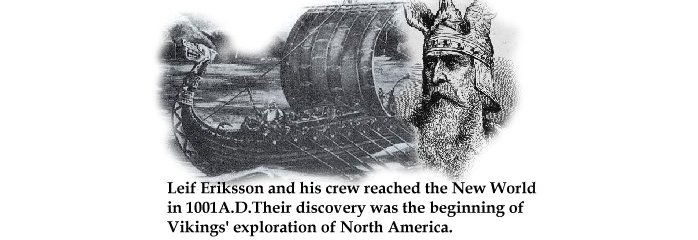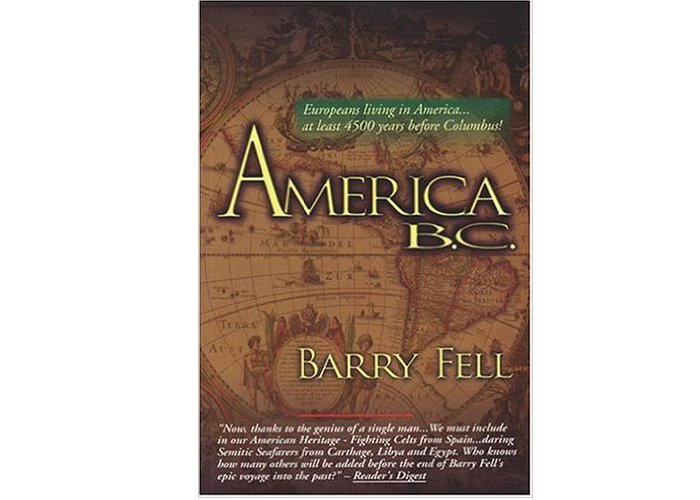Riddle Of Mystery Hill: Who Built America’s Stonehenge?
Ellen Lloyd - AncientPages.com - When 17th century Europeans reached what is now New Hampshire, they found that someone had been there before them.
Evidence suggests that North America was colonized long before the birth of Christ. The truth is there was an advanced civilization on the shores of America thousands of years ago.
Who were these people? Where did they come from? Discover the secrets behind one of the oldest American megaliths.
Mystery Hill is an ancient American site near Salem in New Hampshire. This fascinating place has puzzled scientists for centuries. The stones and inscriptions discovered at this location show that Columbus was anything but the first person to reach the New World.
New Hampshire Mystery Hill, also known as America's Stonehenge, is located about 40 miles north of the city of Boston and about 25 miles inland from the Atlantic Ocean. It is one of Northern America's largest and possibly oldest megalithic sites. Mystery Hill is a series of stone formations traversing over 30 acres.
Mystery Hill, New Hampshire - Image credit: Stan Shebs - CC BY-SA 3.0
When the Europeans colonized today's New Hampshire, they discovered traces of an unknown civilization. The Spaniards paid little attention to the purpose behind the stone circles and other curious megaliths they witnessed.
It took 300 years before the ancient stones of New Hampshire were noticed and examined by scientists.
There is a lot of controversy and several unanswered questions surrounding American Stonehenge.
Who constructed the stone circles near Salem? Is it possible that the mysterious architects were members of an ancient civilization from across the sea? Did the ancients know more about the world than modern man imagined?
Mystery Hill was built to last. The stones at Mystery Hill were not raised by the Pueblo Indians who built cliff houses and brick and masonry homes. The Pueblo Indians lacked proper tools to work with stones found at the American Stonehenge. To work with brick is more manageable than with stone.
Additionally, comparing the techniques used to build the pueblos and the ancient structures near Salem makes it clear that the architects were not the same.
Who Built Mystery Hill And Why?
The architects of Mystery Hill had an impressive knowledge of astronomy. Stone walls throughout the site provide over 200 astronomical alignments with the moon, 45 different stars, and critical geographic points.
 Huge monoliths are aligned to mark the summer and winter sunrise. One standing stone points to the star Thuban, the North Pole star in 2000 B.C. The stones may have helped those who lived here to plot the seasons.
Huge monoliths are aligned to mark the summer and winter sunrise. One standing stone points to the star Thuban, the North Pole star in 2000 B.C. The stones may have helped those who lived here to plot the seasons.
Although Mystery Hill is often referred to as America's Stonehenge, the arrangement of the stones and circles in New Hampshire differs from the original Stonehenge in the United Kingdom.
Stonehenge is located on a plain, not a hill, and is arranged specifically as a series of concentric circles, horseshoes, and squares. The stones involved in Stonehenge are larger, up to 45 tons. The rocks at Mystery Hill are smaller, and the largest is about 11 tons. The stones at Mystery Hill seem scattered around and disordered, yet the monoliths were raised for a specific reason.
The altar stone, known as the Sacrificial Stone, was most likely a place of sacrifice to appeal to the gods.
The altar is a 4.5-ton grooved slab, and it bears a striking resemblance to altar stones found at megalithic sites in Europe.
Beneath the sacrificial table is the Oracle Chamber. It is an elaborate web of hallways and carved-out spaces that are thought to have been used during rituals upon the altar. It contains a bed, bench, closet, and a tube that allows a person inside the lower chamber to speak to congregants above at the altar.
In addition to the Oracle Chamber and the Sacrificial Stone, the site has many other artificial caves and passages. At least one was constructed with a drain to keep them from being flooded. The purpose of the rest of these structures, except one which appears to be a water well, is unknown.
Where Can We Find Clues And Discover The Truth About The Architects Of Mystery Hill?
Some say Mystery Hill was built by the ancient Celts and served as an astronomical calendar.
Others suggest giants raised the ancient stones. According to another theory, the rocks are remains of an ancient Bronze Age civilization from the Mediterranean that reached New Hampshire in the distant past.
Approximately 500 years before the Spaniards and Portuguese reached the shores of America, the Viking Leif Eriksson set foot in the New World in 1001 A.D. Ericson and his crew made it to Vinland, now identified by archaeologists as Anse aux Meadows, Newfoundland.
Although the Vikings made only a few voyages to the New World, Leif Erikson's discovery began the Vikings' exploration of North America.
But the Vikings did not build Mystery Hill. "Someone" was already there even before the time of the Vikings…
Some years ago, samples were taken from Mystery Hill. They were sent to a laboratory in Cambridge, Massachusetts, for examination. The results were astonishing. In this case, carbon dating showed that the samples from Mystery Hill were at least 3,000 years old! As many already know, Carbon-14 dating determines the age of certain archaeological artifacts of a biological origin up to about 50,000 years old.
It means that approximately 1,000 before the birth of Christ, an ancient civilization visited New Hampshire and raised the mysterious stones, which we can admire until today.
The origin of the Mystery Hill ancient architects is a fascinating story.
We can conclude that the 17th Europeans, the Pueblo Indians, and the Vikings were not ancient builders who raised the rocks. There must be another ancient civilization responsible for the megaliths near Salem.
Our journey and search for the forgotten builders of the past take us across the sea.
Might the unknown visitors to Mystery Hill have crossed the ocean? Did the ancient builders arrive by ship from the East? These are intriguing and highly controversial questions always avoided by traditional archaeologists.
Barry Fell, an archaeologist from Harvard, put forward a controversial theory.
It has long been taken for granted that the first European visitors to American shores either sailed with Columbus, or Norsemen like Leif Erikson. Berry Fell has uncovered evidence to replace those legends with myth-shattering fact. Illuminating, authoritative and enhanced with over 100 pictures, that describes ancient European temple inscriptions that date as far back as 800 B.C.. Read more
In 1976, Barry Fell wrote America B.C., a book that pointed out parallels between American and European archaeological sites.
Mr. Fell studied inscriptions, drawings, and engravings from Mystery Hill.
The result of his research clearly showed that America in ancient times was populated by various European races and people from North Africa. Fell could identify traces of Basks, Celts, Phoenicians, and ancient Egyptians across the country.
In Barry Fell's opinion, the ancient visitors came in large ships. The first voyage was accidental. The explorers "stumbled upon" new land and their unexpected discovery led later to more trips to this region of the world.
Another controversial theory promoted by Professor Hanz Holzer suggests that Mystery Hill was built by the ancient Minoan civilization.
According to Professor Holzer, one particular stone, known as the G-Stone provides evidence that the Phoenicians constructed Mystery Hill.
"To me it is not question that this was written by people who spoke the ancient Phoenician language and used the Phoenician alphabet. The origin of this inscription is in the area of Phoenicia, and the island of Crete. The Minoan culture where Phoenician people settled and then became the Minoan people," said Professor Holzer.
The wall lane is typical of Knossos, a city in ancient Crete, the capital of the legendary king Minos and the principal center of the Minoan, the earliest of the Aegean civilizations. In addition, the long central lane at Mystery Hill is reminiscent of some walls in ancient Europe. Professor Holzer thinks that the style of masonry is the same.
We may never know who built Mystery Hill. We know that the ancient builders who possessed astronomical knowledge came from another place. The ancient stones are most likely the remains of ancient culture from across the sea.
Mystery Hill's origins have puzzled men for centuries, and it still does. America's Stonehenge remains as mysterious as ever.
Written by Ellen Lloyd – AncientPages.com
Updated on July 20, 2024
Copyright © AncientPages.com All rights reserved. This material may not be published, broadcast, rewritten or redistributed in whole or part without the express written permission of AncientPages.com
More From Ancient Pages
-
 DNA Of Nine 13th Century Crusaders Provides A Glimpse Into Soldiers’ Life And Death
Archaeology | Apr 22, 2019
DNA Of Nine 13th Century Crusaders Provides A Glimpse Into Soldiers’ Life And Death
Archaeology | Apr 22, 2019 -
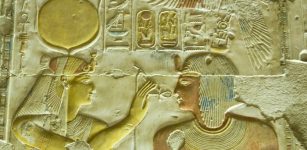 Hathor – One Of Ancient Egypt’s Greatest Female Deities
Egyptian Mythology | Jun 16, 2021
Hathor – One Of Ancient Egypt’s Greatest Female Deities
Egyptian Mythology | Jun 16, 2021 -
 On This Day In History: Amelia Earhart, Most Famous Female Pilot – Disappeared Over The Pacific Ocean – On July 2, 1937
News | Jul 2, 2016
On This Day In History: Amelia Earhart, Most Famous Female Pilot – Disappeared Over The Pacific Ocean – On July 2, 1937
News | Jul 2, 2016 -
 Ancient DNA Reveals Hunter-Gatherers From Mexico Moved To California 5,200 Years Ago
DNA | Nov 29, 2023
Ancient DNA Reveals Hunter-Gatherers From Mexico Moved To California 5,200 Years Ago
DNA | Nov 29, 2023 -
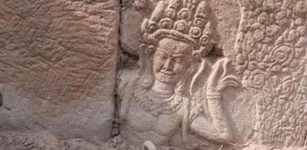 Apsara Carvings Dated To 12th Century Uncovered At Takav Gate In Angkor, Cambodia
Archaeology | May 5, 2022
Apsara Carvings Dated To 12th Century Uncovered At Takav Gate In Angkor, Cambodia
Archaeology | May 5, 2022 -
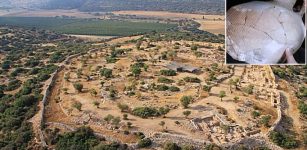 Biblical Tefach: Amazing ‘Common Constant’ Found Among Ancient Storage Jars In Israel
News | Oct 14, 2020
Biblical Tefach: Amazing ‘Common Constant’ Found Among Ancient Storage Jars In Israel
News | Oct 14, 2020 -
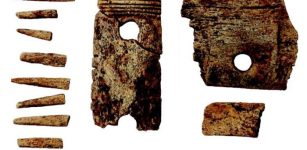 Large Anglo-Saxon Burial With Bodies And Roman Artifacts Found At Bicker Fen, Lincolnshire, UK
Archaeology | Aug 14, 2023
Large Anglo-Saxon Burial With Bodies And Roman Artifacts Found At Bicker Fen, Lincolnshire, UK
Archaeology | Aug 14, 2023 -
 On This Day In History: Vasco De Gama Departed On First European Voyage To India – On July 8, 1497
News | Jul 8, 2016
On This Day In History: Vasco De Gama Departed On First European Voyage To India – On July 8, 1497
News | Jul 8, 2016 -
 Mysterious Pre-Celtic Civilization Who Came To Ireland From An Unknown Land
Featured Stories | Aug 13, 2024
Mysterious Pre-Celtic Civilization Who Came To Ireland From An Unknown Land
Featured Stories | Aug 13, 2024 -
 New Inscriptions, Gold And Paint Showed Thanks To Restoration In Temple Of Edfu
Archaeology | Sep 20, 2024
New Inscriptions, Gold And Paint Showed Thanks To Restoration In Temple Of Edfu
Archaeology | Sep 20, 2024 -
 Early Humans Were Walking 7 Million Years Ago – Hominin Fossils Reveal
Archaeology | Sep 1, 2022
Early Humans Were Walking 7 Million Years Ago – Hominin Fossils Reveal
Archaeology | Sep 1, 2022 -
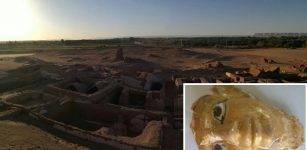 Five Ancient Roman Tombs With Different Architectural Style Discovered In Egypt
Archaeology | Aug 26, 2017
Five Ancient Roman Tombs With Different Architectural Style Discovered In Egypt
Archaeology | Aug 26, 2017 -
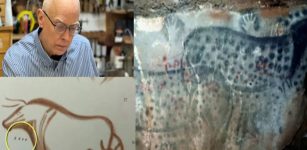 Cryptic Ice Age Markings In European Caves Deciphered – Proto-Writing Discovered By Amateur Archaeologist
Archaeology | Jan 5, 2023
Cryptic Ice Age Markings In European Caves Deciphered – Proto-Writing Discovered By Amateur Archaeologist
Archaeology | Jan 5, 2023 -
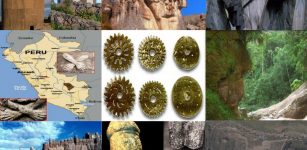 10 Great Ancient Mysteries Of Peru
Featured Stories | May 17, 2016
10 Great Ancient Mysteries Of Peru
Featured Stories | May 17, 2016 -
 Movie Stars’ Creepy Encounters With The Unexplained
Featured Stories | Oct 28, 2019
Movie Stars’ Creepy Encounters With The Unexplained
Featured Stories | Oct 28, 2019 -
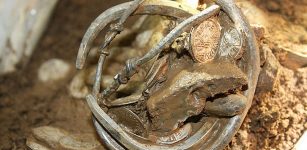 Watlington Viking Hoard May Re-Write History Of England
Archaeology | Dec 11, 2015
Watlington Viking Hoard May Re-Write History Of England
Archaeology | Dec 11, 2015 -
 Brian Boru – Famous And Brave Irish Hero Who Dared To Chase Off The Vikings
Featured Stories | Jun 14, 2022
Brian Boru – Famous And Brave Irish Hero Who Dared To Chase Off The Vikings
Featured Stories | Jun 14, 2022 -
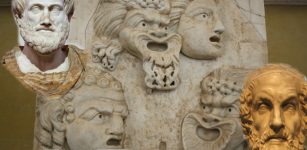 Ancient Suda: Massive Anonymous Byzantine-Greek Lexicon Dated To 10th Century
Featured Stories | Nov 6, 2018
Ancient Suda: Massive Anonymous Byzantine-Greek Lexicon Dated To 10th Century
Featured Stories | Nov 6, 2018 -
 Something Strange Happened To Our Ancestors 900,000 Years Ago – Genetic Study Reveals
DNA | Sep 1, 2023
Something Strange Happened To Our Ancestors 900,000 Years Ago – Genetic Study Reveals
DNA | Sep 1, 2023 -
 Why Are Statues Of Mythical Yeti Dividing People In The Himalayas?
Featured Stories | Feb 18, 2020
Why Are Statues Of Mythical Yeti Dividing People In The Himalayas?
Featured Stories | Feb 18, 2020



